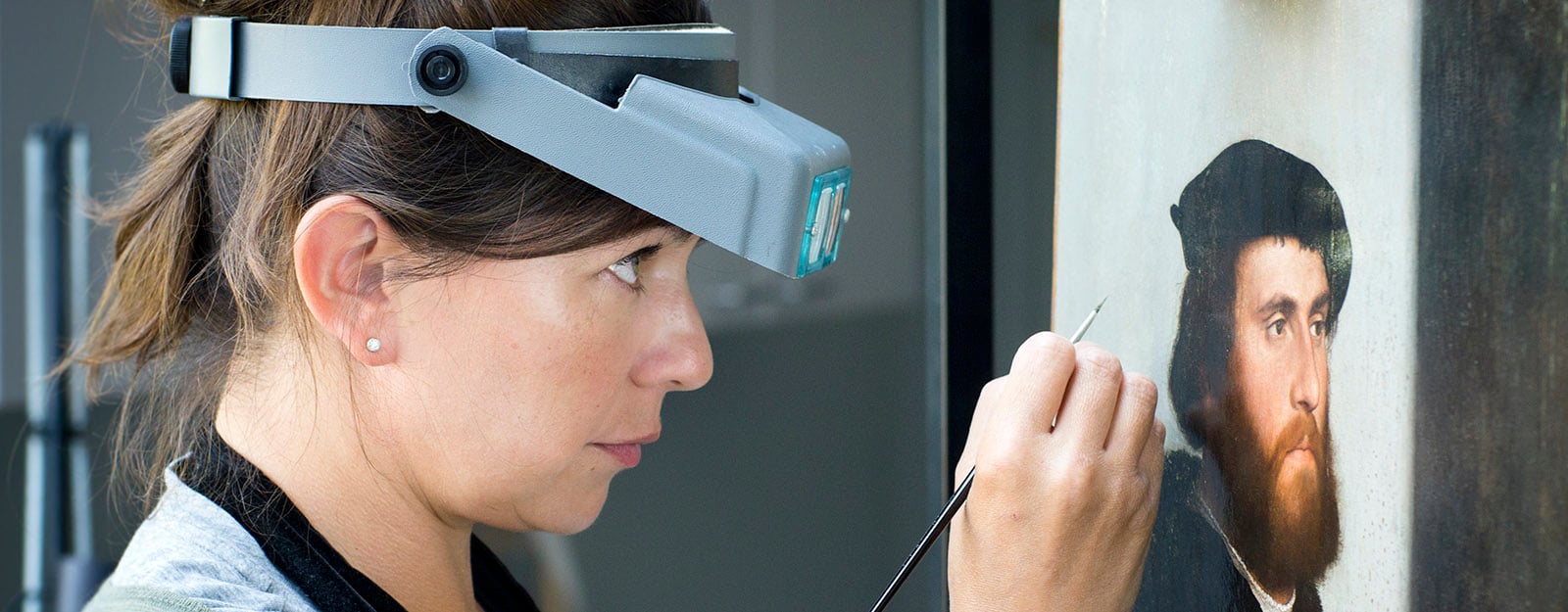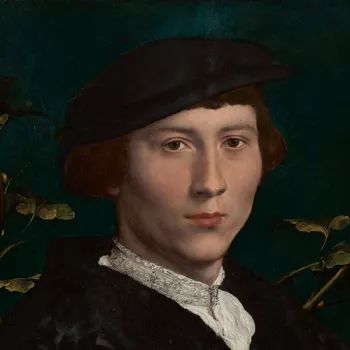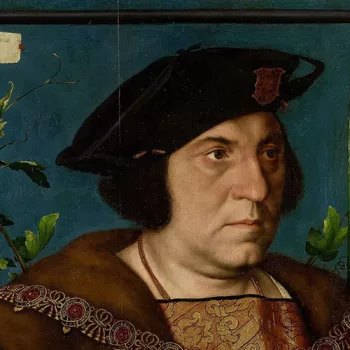Conserving Holbein's 'Hans of Antwerp'

The portrait, A Merchant of the German Steelyard: Hans of Antwerp, by Hans Holbein the Younger has undergone two years of major conservation work.
Explore how the portrait was brought back to life to reveal previously lost detail which provide clues to who 'Hans of Antwerp' really was.
The history of the portrait
Holbein's portrait of A Steelyard Merchant, 'Hans of Antwerp' was first recorded in the Royal Collection in 1639 when the painting hung in Charles I’s Chair Room at Whitehall Palace. Early in its history, the painting suffered some major damages; the 1639 inventory noted its damaged state, describing it as being 'upon a Crackt board’.
X-radiograph images show that the panel had been broken into three pieces, which were glued back together and areas of lost paint repainted. An additional piece was added to the right-hand edge, perhaps to compensate for worm damage, and the background of the painting was also repainted.
This early repair work and overpainting altered the overall look of the painting and concealed some of the details which help to identify the sitter.
Who is the sitter?
The portrait depicts a man dressed in an expensive fur-lined gown, resting his quill pen on a sheet of paper and cutting the string of a letter with a knife. The paper is dated 26 July 1532.
In 1874, a reading of the inscription on the letter led experts to believe the sitter was the goldsmith Hans of Antwerp, who worked for Henry VIII and was a close friend of Holbein. However, in the 20th century, doubts about the sitter’s identity re-emerged, with details in the painting suggesting that Hans of Antwerp was more likely to be a merchant than a goldsmith. Recent conservation work to remove overpaint and discoloured varnish confirms that that the sitter was indeed a merchant.
The key to the sitter's identity lies in the inscriptions. The sheet of paper on which the merchant has begun to write in cursive ‘merchant’ script has the year, day and month, as was usual practice for merchant letters.
Throughout the portrait’s history the inscription on this letter must have been hard to decipher. In 1867 it was noted that the address was no longer legible, the only distinct word being Stallhof (Steelyard).
One palaeographer has read Hans of Antwerp in the inscription; two others see a k in the name, which could give us Henricken. All three agree that hofe (part of Stallhof) appears on the third line, which confirms that the sitter was a merchant of the Steelyard and a member of the Hanseatic League.
If this merchant was called ‘Hans of Antwerp’ he could have been a German based at the London Steelyard who had strong trading links with Antwerp.
The mark on the seal, which is turned towards the viewer, also suggests the sitter is a merchant. Previous repair work and overpainting had altered this to make it appear as a W. However, the recent conservation work has revealed that Holbein originally painted a circle and crossed lines. This mark also appears on the letter that he is holding.
Revealing lost details

Following conservation work, the cool grey wall behind the sitter was revealed with the subtle cast shadow of the merchant transforming the whole effect of the painting.
The conservation has revealed the delicacy and clarity of Holbein’s painting technique and his extraordinary ability to capture the individual details of a sitter. The merchant’s eyes have a striking, three dimensional quality, and Holbein has also recorded the particular way in which his eyebrows have grown and the way in which individual hairs fly out from the main body of his hair and beard.
Discovering the artist's techniques
Analysis with infra-red reflectography reveals the artist’s under-drawing for the first time and how Holbein changed the composition.
The merchant’s hat was reduced in size, his left shoulder and arm were originally placed higher, and it appears that there were originally going to be more papers at different angles on the table.
In infra-red one can see fine free-hand hatching of underdrawing establishing the shape of the sitter’s face, particularly around the nose. These contrast with the underdrawn lines around the eyes which seem to be reinforcing traced lines from an original drawing.












